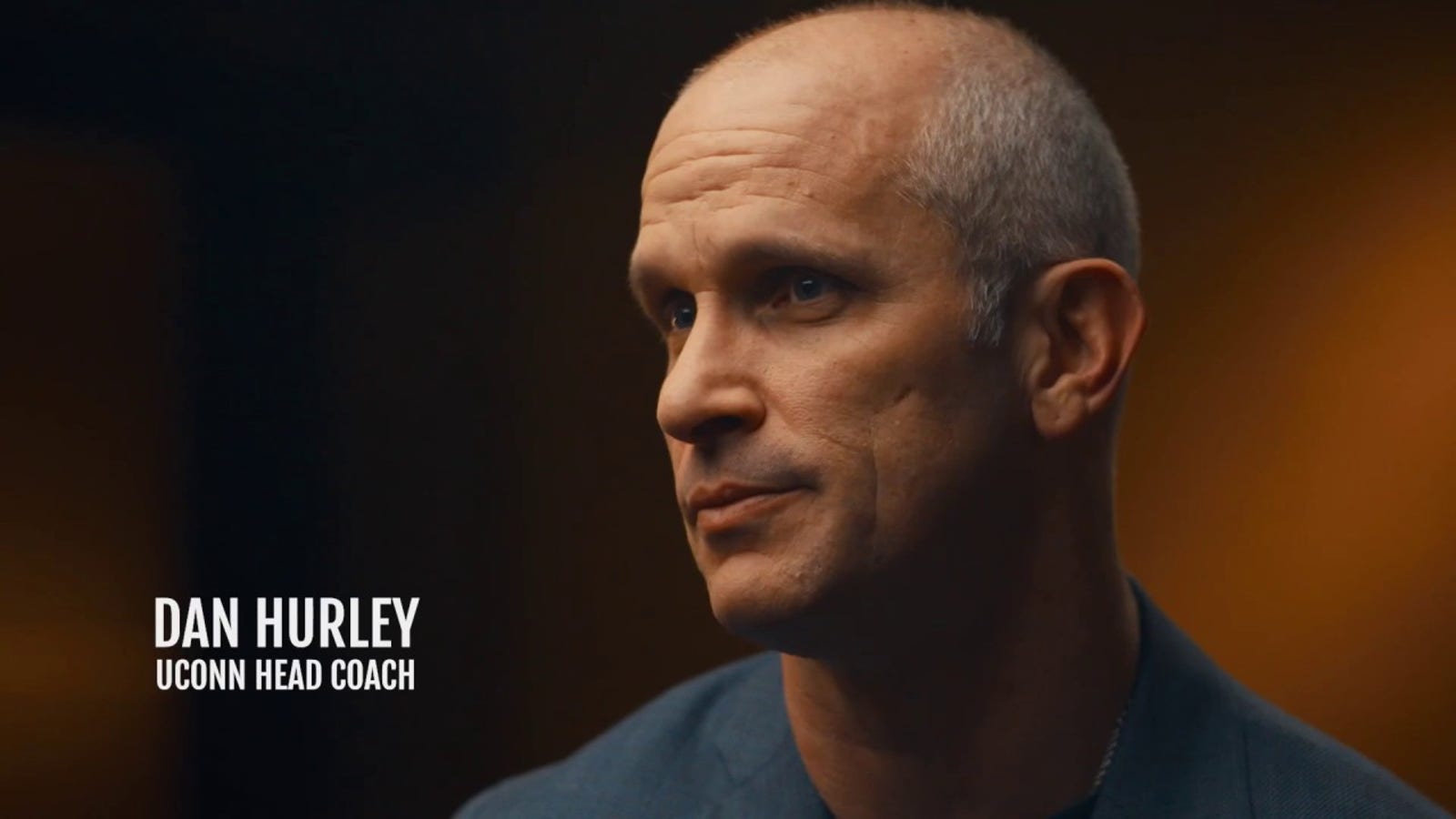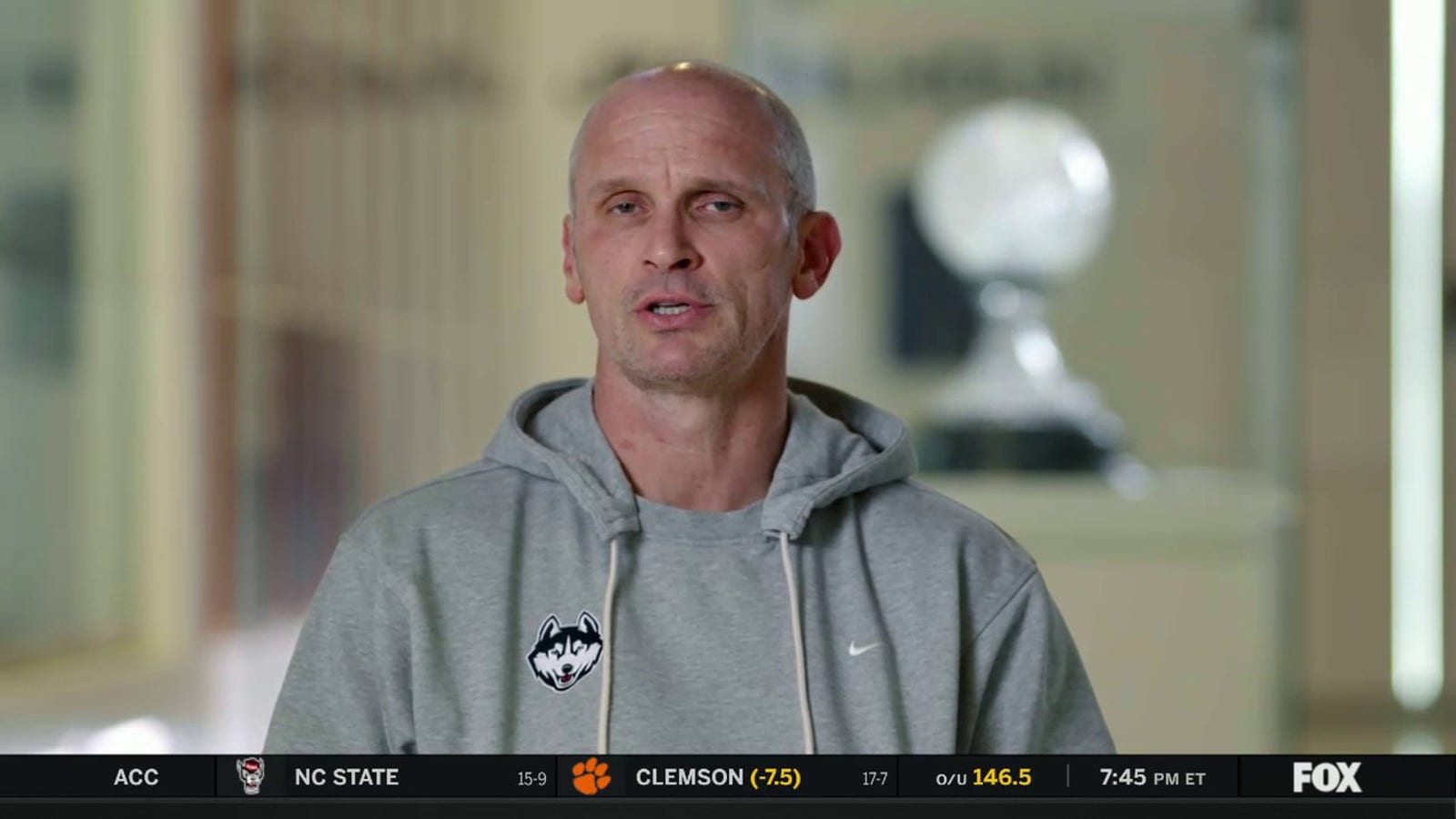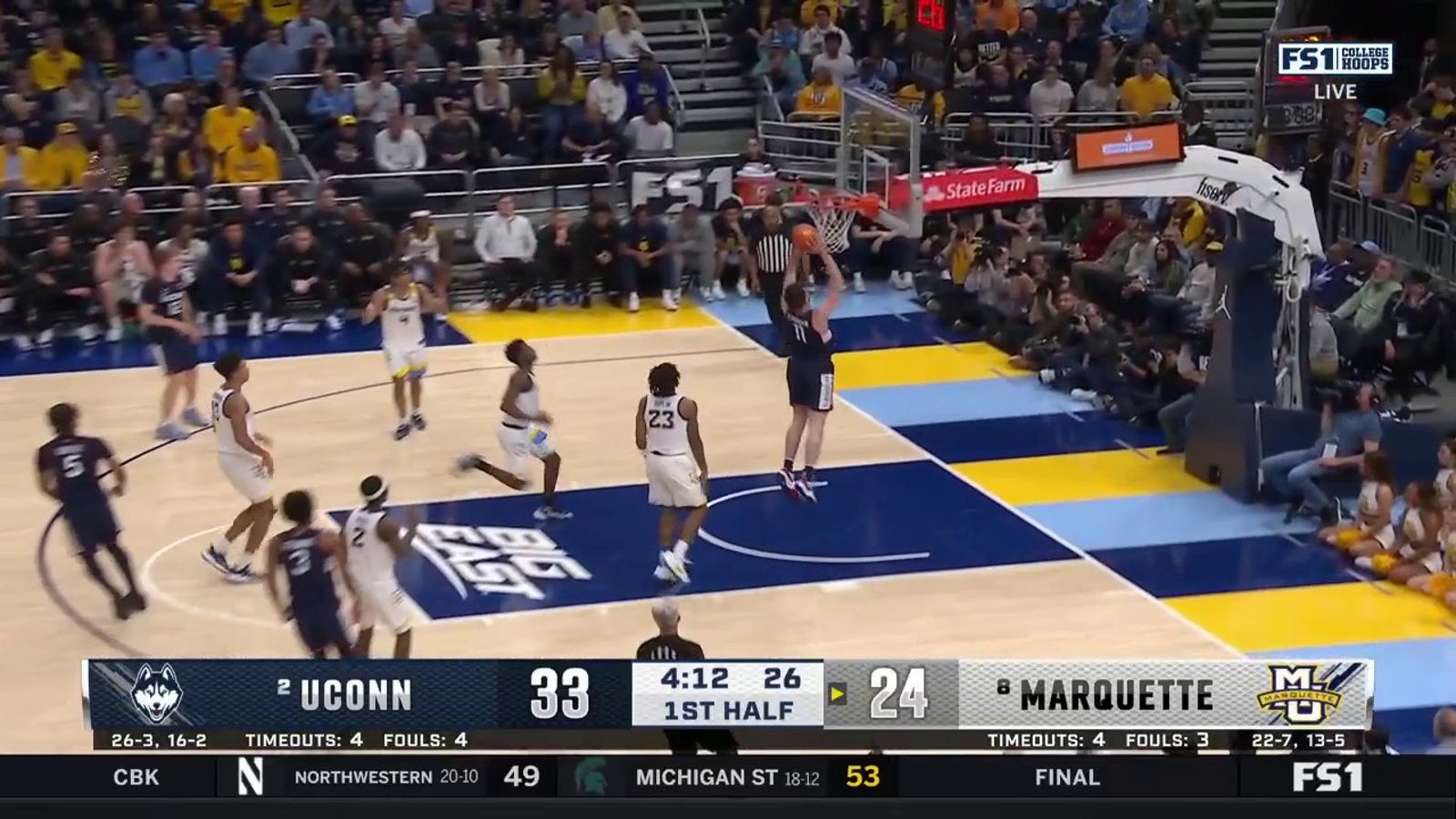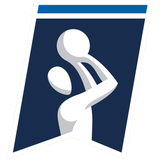How Dan Hurley built UConn into an offensive juggernaut — and repeat title contender
STORRS, Conn. — A few weeks removed from his second consecutive loss in the opening round of the NCAA Tournament, this time to 12th-seeded New Mexico State in stunning fashion, Dan Hurley, the humbled and hurting head coach at Connecticut, invited shooting guard Jordan Hawkins to his office.
By then, Hurley knew that changes were needed to enliven UConn’s offense. Back-to-back March Madness defeats in which the Huskies shot 7-for-23 from 3-point range and only scored 22 points in first halves against the Aggies in 2022 and Maryland a year prior had exposed one of the program’s flaws: Hurley’s house blend of punch-out toughness, crazed intensity and phonebooth defense could only take Connecticut so far.
What UConn needed was an imaginative offensive elixir.
“Without a high-powered offense and being able to score the ball,” Hurley told FOX Sports, “you can’t win a six-game tournament.”
Hurley knew that Hawkins was someone who would catalyze change. A 6-foot-5, 185-pound gunner, Hawkins had attempted more shots from beyond the arc than inside it during a modest freshman season. But the coaches saw enough behind the scenes to believe they’d found the sport’s best movement shooter in a decade, the kind of player capable of running defenders ragged off screens and then punishing them with barrages of 3-pointers necessitated by the analytical and international concepts UConn vowed to fuse. Hurley showed Hawkins just how many 3-pointers Klay Thompson and Stephen Curry — both of the Golden State Warriors in the NBA — had attempted during their respective college careers. “You’ve got to get this many,” Hurley said.
The desire to showcase Hawkins’ 3-point shooting was about far more than simply maximizing the talents of an ascending player — though that, too, proved prescient as Hawkins went on to bury 109 3-pointers in 39 games, six shy of the program’s single-season record, while leading UConn to its fifth national championship. More broadly, Hurley’s choice reflected his deepening commitment to a multi-year philosophical shift on the offensive end of the floor, an evolution designed with greater NCAA Tournament success in mind.
Hurley and his assistants envisioned a movement-based offense that emphasized off-ball screening over isolation plays or traditional pick and rolls. They dreamed of a roster stuffed with high-level passers, shooters and “game processors” who could operate a system culled largely from overseas concepts. Change arrived in the form of a four-pronged plan that would touch nearly every corner of the program: from rewriting the core offensive principles to revising the player profiles used in recruiting; from reconfiguring the coaching staff’s study habits to rearranging the way practice time was apportioned.
“I feel like there’s less pressure on you as a coach when you can win a game in non-rock fight fashion,” Hurley said. “When you can go on runs, it’s more fun, and it’s less pressure to get a stop. I think you coach more relaxed.
“My mental health is much better embracing offense.”
There were incremental improvements during Hurley’s first four years as he replenished the dregs of former coach Kevin Ollie’s regime, elevating Connecticut from 85th in offensive efficiency in 2018-19 to 22nd by the 2021-22 campaign. Then the Huskies slammed the accelerator to win a national championship last season, marauding through the NCAA Tournament with a dizzying paradox of choreographed improvisation that left opponents chasing ghosts. Their average margin of victory was 20 points per game.
The possibility that this year’s group might be even better means Connecticut, which is 31-3 overall and earned the NCAA Tournament’s overall No. 1 seed, has a legitimate chance to become the first repeat champion since Florida in 2006 and 2007. A successful run through the Big East Tournament last week means UConn will enter the Big Dance ranked No. 1 in the country for offensive efficiency, No. 6 for effective field goal percentage and No. 6 in assist rate. Every member of the starting lineup is ranked among the top 26 players in the country by EvanMiya.com and averages at least 10.8 points per game. Hurley’s current roster is averaging nearly six more points per 100 possessions than the title-winning group from a season ago.
“Any time you played Danny’s teams in the past, you knew you had to win a street fight,” said Manhattan head coach John Gallagher, whose team lost to UConn in late November, during an interview with FOX Sports. “Now in the last, I’d say, two to three years, you gotta go into the library and win the debate, too.
“I don’t think he gets enough credit for evolving as one of the best coaches in the country.”
Dan Hurley on UConn’s road to the Big East Tournament championship

*** *** ***
On a Friday afternoon in mid-February, practice inside the Werth Family Champions Center begins with UConn’s players donning pairs of sticky sports gloves, not unlike the kind receivers wear in football. They form a line that stretches from one end of the court to the other, and each Husky has two basketballs at his disposal.
From there, a collection of ultra-talented Division I athletes launches into the kind of ball-handling drills the average person likely performed at youth basketball camps: shuffling a ball in circles around the waist; weaving a ball through the legs to make a figure eight. Eventually, layup lines and routine passing circuits are carried out with gloved hands, too.
Such simplicity is probably not what most people expect from the prohibitive NCAA Tournament favorites. But on this campus and with this coach, there’s little doubt where the general principle came from: legendary high school coach Bob Hurley, whose son now leads the Huskies.
“You have to be fundamentally sound,” Bob Hurley told FOX Sports when asked what type of offensive philosophies he taught his sons. “I was a John Wooden person. So it was fundamentals, and it was conditioning, and it was team play. And it was always about winning — it was never about individual performance.”
Ensuring that every player becomes fundamentally sound is paramount to the success of UConn’s new offensive scheme, a motion-based system that leans on passing, cutting and off-ball screening far more than individual dribbling and old-school post-ups. Big men like Donovan Clingan and Samson Johnson are expected to read, screen and pass from the top of the key to clear unnecessary traffic in the lane. Shooters like Tristen Newton, Cam Spencer and Alex Karaban are asked to make expert cuts, clean dribble exchanges and droves of 3s after peeling off screens. Everyone handles the ball in the hunt for high-quality shots.
Though UConn still has plenty of set plays, the effectiveness of its revamped system hinges on the players’ ability to read and react on the fly. Any call Hurley barks from the sideline comes with a roadmap of decision-making principles that have been painstakingly drilled since the summer. And now the Huskies enter most games with roughly a dozen opponent-specific alignments that include five or six variations each — a nuance described by Hurley as “layering actions” because it produces different outcomes from the same offensive shell to keep a defense guessing. The whole thing works like a series of “if-then” statements that inform the players’ movements: If an opponent is switching on screens, then the screener slips to the hoop; if an opponent goes under a screen, the screener pops for a perimeter jumper.
“They’re really patient,” Gallagher said, “so the sophistication gets to be played out over a shot clock. There’s ingredients that happen that are just hard to believe.”
Said Newton: “It feels like anything that we do can’t be stopped.
There was a time when offense like this would have been hard for Hurley to believe, too. A basketball indoctrination that began during childhood and continued through Hurley’s first few jobs included plenty of lessons about defense, toughness, rebounding, recruiting and the psychology of coaching. Those were things that came naturally to Hurley as the head coach at St. Benedict’s Prep, Wagner and Rhode Island before UConn hired him in March 2018.
What Hurley’s journey had less of were the ingenuity and offensive creativity now coursing through Connecticut’s program. Having already mastered the sport’s brutality, Hurley began studying the beautification of basketball instead. He refrained from watching the NBA and dedicated more time to EuroLeague, EuroCup, FIBA and some of the better college offenses around the country. By re-hiring assistant coach Luke Murray ahead of the 2021-22 season, Hurley aligned himself with someone who, over time, opened his mind to analytics.
“I think me and [associate head coach] Kimani [Young], being from New York and New Jersey, you know, what is this analytics s—?” Hurley said.
The analytics s— was a world Murray had been inhabiting for nearly a decade, fascinated with how the Warriors and Lenovo Tenerife in Spain were revolutionizing their shot selection. Both teams had designed offenses that were prioritizing 3-pointers, “rim shots,” free throws and easy baskets in transition to maximize scoring — all while bastardizing mid-range jumpers unless the shot clock was about to expire. Now UConn is doing the same: Newton, Karaban and Spencer, a Rutgers transfer, have all made at least 60 triples this season.
By utilizing a data company called HD Intelligence, Hurley and his staff are now focusing on things like points per shot and the distribution of where shots originate on the floor. They even build the team’s offensive actions around the hot and cold zones of individual players. More than 76% of UConn’s total field goal attempts during the regular season came from either 3-point range or the restricted area at the rim, according to CBB Analytics, in conjunction with the overall goal.
It’s helped transform Connecticut into one of the more forward-thinking programs in the sport.
“Until recently, those painful [NCAA Tournament] losses,” Hurley said, “I’ve taken that 12 to 15 minutes where I would have had us in a steel cage hitting each other with a chair to get tougher and to get better defensively — I’ve taken that 12 to 15 minutes to work on cutting, spacing, execution.”
‘We’re confident’ – UConn HC Dan Hurley looks to lead to back-to-back championships

*** *** ***
An office belonging to the assistant coach described by Karaban as UConn’s offensive “mastermind” is strewn with complex basketball doodles. The whiteboard affixed to one wall has become a tapestry of lines, arrows and swoops. The surface of an L-shaped desk is engulfed by papers of the scrap and intact variety, all of them brimming with possibilities. There are even leftover call sheets from games gone by, still creased from having once been folded into suit pockets.
It’s here that Murray, 39, dreams and devises some of the artful flourishes that have remodeled Connecticut into an unguardable offensive machine. The incorporation of ideas from around the globe and a strict adherence to analytics are the areas of UConn’s system where Murray’s fingerprints are most commonly found. He’s constantly nudging Hurley and the staff to modernize their approach, as the sport itself does the same.
“I give Danny a lot of credit — and he probably hasn’t gotten enough credit for this — for knowing how valuable a guy Luke was and what he could do to help that program even go up another level,” said Towson head coach Pat Skerry, who had Murray on his staff for several seasons, during an interview with FOX Sports.
Murray and Hurley first worked together at Wagner from 2010-11, not long after the former broke into the business as the director of basketball operations at Quinnipiac under current UConn assistant Tom Moore. They reunited for three years at Rhode Island from 2013-15 and are now paired for the third time.
Murray, whose father is actor Bill Murray, embodies the idea of a self-made coach. He split his college years between UConn and Fairfield — graduating from the latter in 2007 — but never played at either school. Instead, Murray poured himself into coaching and recruiting to entrench himself in the sport. He frequented the basketball offices during his lone semester at Connecticut and got involved with an AAU program called the New York Gauchos. His nights and weekends were spent shuttling kids to practices across the tri-state area.
A deep knowledge of high school prospects is what earned Murray the job at Quinnipiac. Moore was so impressed with the way he evaluated players and built connections that an offer was extended before Murray graduated college. The thirst for knowledge fueled Murray’s transition to coaching when he accepted an on-court role for Mike Donnelly at Post University, a Division II school in Connecticut, in 2009.
“Right away you just knew he was kind of destined for stardom because of his passion for the game,” Donnelly told FOX Sports. “But his mind was just on another level.”
Murray’s fascination with the sport soon expanded to leagues all over the world. He began educating himself on trends that might find their way to the United States and then found ways to personalize them for teams and players he coached. He started monitoring clubs in Spain, Turkey, France, Russia and Australia — just to name a few — and formed a library of concepts he liked, categorizing them into different families of plays. His consumption of international basketball hasn’t changed at Connecticut thanks to a division of labor with Young, who handles the other half of UConn’s opponent scouts, and a subscription to the video indexing company Synergy Sports.
Tailoring the overseas concepts to UConn’s personnel is one of Murray’s greatest strengths. Rather than simply presenting the things he’s seen to the staff, Murray does so with certain individuals on the roster in mind — things like staggered screens for Karaban or zoom actions for Newton that address the exact problems Hurley and the staff are trying to solve. Murray holds one-on-one film sessions for players who want further reinforcement of the ideas.
“He would always walk me through and show me the different options,” former UConn star Andre Jackson Jr. told FOX Sports. “Breaking down [the] first option of the play, second option of the play and really giving the players an understanding of, like, how you can score on any part of the action.”
Things have worked so well at UConn that one of the coaches calling for advice is Murray’s old boss, Skerry, who remains in charge at Towson. Though they haven’t worked together since 2013, the former colleagues still speak on a daily basis. Murray finds time to watch the Tigers’ film and offer suggestions for things that will generate higher-quality shots.
And just like he did with Hurley three years ago, Murray talked Skerry into signing up for HD Intelligence.
“They’re doing it better right now, over these last couple years, than anyone else,” Skerry said. “It’s fun to watch. But I wouldn’t want to try to scout it and stop it.”
*** *** ***
A wry smile crept across the face of Marquette head coach Shaka Smart as he paused his postgame news conference to peer at the final box score. It was a frigid weekend in mid-February, and Smart’s team had arrived at the XL Center ranked 11th in the nation after stringing together eight straight wins. But on this eye-popping afternoon in Hartford, the Golden Eagles were ruthlessly dismantled by No. 3 Connecticut, 81-53.
Which is why Smart couldn’t help but chuckle when he noticed the stat line for Karaban, who’d scored at least 20 points in two consecutive games. Marquette limited the UConn star to seven measly points on 2-for-9 shooting and got blown out of the gym anyway.
“He is a winning guy,” Smart said. “So even on a day like this, you know, where it’s not his best shooting day, he impacts the game in a lot of ways.”
Such is the indispensable essence of Karaban, a 6-foot-8, 220-pound redshirt sophomore who doesn’t lead the Huskies in scoring, rebounding, assists, field goal percentage, free-throw percentage or 3-point percentage — and yet Hurley refers to him as the “brain center” of everything UConn does.
On an individual level, Karaban is averaging 13.9 points per game while shooting 50.1% from the field. And just like Hawkins before him, Karaban attempts more shots from 3-point range than 2-point range to embody the program’s analytical approach. On a team level, Karaban contributes to an adjusted offensive efficiency of 128.9 points per possession when he’s on the floor, according to EvanMiya.com, a number bested by only three players across the country. His ability to meld positional versatility with high-level perimeter shooting and the broadest knowledge base of anyone on the team makes Karaban the ideal poster boy for UConn’s offensive renaissance.
And it helps explain why opposing coaches admire his game so deeply.
“He’s one of the best five, six, seven players in America,” Gallagher said. “No one talks about him.”
The proverbial basketball IQ is what piqued the interest of Moore during the early stages of Karaban’s recruitment. He saw in the Southborough, Massachusetts, native a penchant for winning and toughness that Moore knew would appeal to Hurley, who demands both traits from his players. He sensed an elevated understanding of passing and movement that would likely mesh well with Murray, who joined Moore’s pursuit after agreeing that Karaban, a four-star prospect, could be “kind of like the first major piece” to the offense’s retooling.
A meandering prep career took Karaban from Algonquin Regional High School in Massachusetts (one season) to the New Hampton School in New Hampshire (two years) to IMG Academy in Florida (one semester) as he developed into the No. 95 player in the 247Sports Composite for the 2021 recruiting cycle. He chose Connecticut over Creighton, Providence, Northwestern and Penn State, among others, and was the lowest-rated prospect in a Husky signing class that ranked seventh in the country. His decision to enroll at UConn early created little fanfare.
“I’ve never really had the national attention,” Karaban told FOX Sports. “I’ve honestly been cool with it because I feel like the people that know my game, the people that know who I am, they’ll respect me more and know how much more I value them. That’s why I value this place so much because they cared about me when they recruited me.”
The read-and-react skills Karaban learned at New Hampton, where head coach Andrew Gale said the philosophy is “to teach kids how to play basketball, not have them memorize plays,” eased the transition when he arrived at UConn partway through the 2021-22 season. Karaban impressed by finding ways to score while running with the second- and third-stringers in practice, even when no plays were designed on his behalf. He began directing his teammates within a few months of joining the program because he’d learned the responsibilities for all five positions. Veterans like Jackson and Adama Sanogo encouraged Karaban to speak up for the betterment of the group during last year’s national championship run.
The ability to move people around in real time, as Hurley describes it, is among the laundry list of winning plays Karaban contributes on a nightly basis — things that will never show up in a box score but still catch the attention of coaches like Smart and Gallagher. Member’s of Connecticut’s staff gushed when asked for more examples of what makes Karaban so vital: his heady cuts to salvage dead possessions; his lightning-quick ball reversals to catch the defense mid-rotation; his in-game communication with some of the team’s slower learners; how easily he pairs a keen understanding of basketball strategy with appropriately timed applications of things that were taught in practice.
Karaban divulged one of his secrets during an interview last month: He monitors the on-court dialogue between opposing players and coaches for any words that hint at what’s about to happen.
“That s— right there,” Hurley said. “I mean, he’s just like the perfect modern player and problem solver.”
Every team needs a brain center.
Stephon Castle finds Alex Karaban on the break for a strong two-handed slam to extend UConn’s lead over Marquette

*** *** ***
Music blares as Hurley walks onto Connecticut’s practice court at 1:18 p.m. on a Friday afternoon in February. There are headphones in his ears, a ski hat on his head and reflective sunglasses covering his eyes. Untied shoelaces flap with every step.
The soundtrack progresses from “Thunderstruck” by AC/DC to “Crazy Train” by Ozzy Osbourne, from “Enter Sandman” by Metallica to “The Final Countdown” by Europe. Hurley launches half-court shot after half-court shot in his typical pre-practice routine. He pounds his chest after burying two in a row. Then he hoists a few more in the opposite direction.
“This play list is dog s—, boys!” Hurley bellows to an array of graduate assistants and student managers. “It doesn’t have any Pearl Jam.”
That the songs continue despite Hurley’s objection means there are parallels to be drawn between this innocuous moment and the way UConn’s offense is currently operating. The connection lies in a phrase Hurley uses to remind his players that the answers for breaking down a defense can always be found in the principles they’ve adhered to for months. In practice and in games, Hurley is heard reminding the Huskies, “Don’t let the music stop!” when he wants them to keep moving, cutting, screening and passing in search of a better shot. The overarching message is to trust the process even when success isn’t immediately found, just like Hurley did with his half-court shooting despite a glaring lack of Pearl Jam.
And it’s this image of a 51-year-old coach happily heaving shots that tells the story of how good UConn’s offensive evolution makes Hurley feel. His mental health is better after UConn battered its opponents by 17.2 points per game en route to the Big East regular season and tournament titles. He rests easier knowing that a program upended by New Mexico State and Maryland can now dominate in more ways than one. He enjoys seeing what UConn’s offense has become.
“It’s led us to an incredible position now where [we are] not losing our culture, our identity, how hard we play, our defense, our rebounding — but then getting up to speed offensively. It’s what’s led to that, man.”
He turns and gestures toward the practice court. Above it, last year’s national championship banner hangs.
Michael Cohen covers college football and basketball for FOX Sports with an emphasis on the Big Ten. Follow him on Twitter at @Michael_Cohen13.

Get more from College Basketball Follow your favorites to get information about games, news and more

